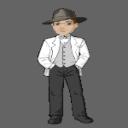Yahoo Answers is shutting down on May 4th, 2021 (Eastern Time) and the Yahoo Answers website is now in read-only mode. There will be no changes to other Yahoo properties or services, or your Yahoo account. You can find more information about the Yahoo Answers shutdown and how to download your data on this help page.
Trending News
Why are there so many different measurements for drill bits?
I can understand SAE fractional bits (3/8" etc.) and metric bits (7mm etc.), but why are there lettered and numbered series of drill bits?
I can understand SAE fractional bits (3/8" etc.) and metric bits (7mm etc.), but why are there lettered and numbered series of drill bits?
For that matter, why in the hell do left-handed drill bits exist?
Apparently I was too vague. Yes, there needs to be more than one single size of drill bit. I don't know why there need to be multiple series of drill bits. If you don't know, you have fractional bits (1/8", 5/32", etc.), metric bits (1.5mm, 2mm, etc.), lettered bits (A, B, C, etc.) and numbered bits (#4, #5, etc.). Why?
I suspect that numbered and lettered sets were created in earlier times for tradesmen who were not good at math, to be less confusing. I really have no idea, though.
5 Answers
- ?Lv 76 years agoFavorite Answer
First off, left-handed drill bits are ideal for removing broken fasteners. Nothing else is as effective. Ostensibly you would use the drill bit for making a hole into which you would then insert an easy-out, and then wrench out the fastener. In practice however the heat of drilling combined with the friction of the bit itself is often enough to back out the fastener.
The gauge and lettered sizes are anachronisms, holdovers from earlier practice. Owning an array of these bits isn't important unless you're in clockmaking or auto restoration, where you may encounter parts that have such odd hole sizes. In modern practice they don't have much relevance and can easily be overlooked as what they are, relics of a more colorful time.
- Stuart HLv 66 years ago
Roger is correct.
Another example is drilling holes for 1/8" pop rivets.
A 1/8" drill bit can be a bit tight so ideally you use a numbert 30
Source(s): Sheetmetal worker - XTXLv 76 years ago
screws and bolts have many sizes == and == often you have to drill wood to make pilot holes for screws == and == it is sometimes necessary to drill into concrete or brick and that requires a masonry bit and they come in varied sizes === it is not like you are hanging a large or a tiny item on the wall and you need the correct bit for the job ... auto work consists of varied sizes of drill bits .... SO, the true bottom line is much like writing a paper for class and you do not use a magic marker for that ,, you use the correct pen ... and that goes for drill bits .... the right tool for the job .....
- ?Lv 76 years ago
here is an example
if you wanted to make a pilot hole for a 1/4 -20 tap you would need a .201 drill there is no good fractional equivalent so you use a number 7 drill


